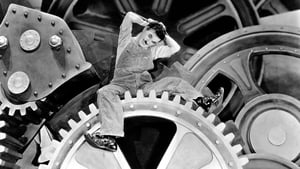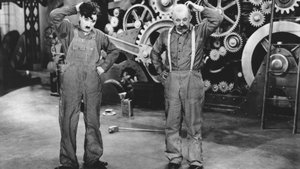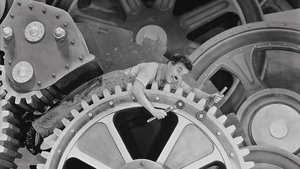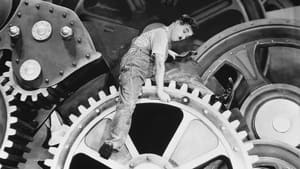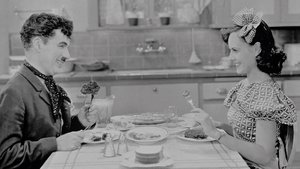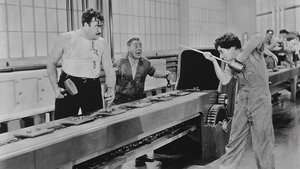Contact: [email protected]
Video Sources 0 Views
- Watch trailer
- Modern Times

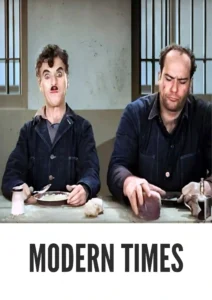
Modern Times 1936 First Early Colored Films Version
Synopsis
Table of Contents
ToggleReview: Modern Times (1936) – A Timeless Satirical Masterpiece Reimagined in Color

Introduction
“Modern Times” (1936) stands as a timeless testament to the enduring power of satire and social commentary in cinema. In this review, we’ll explore the significance of this early colored film, examining its impact on audiences and its lasting legacy in the realm of comedy and social critique.
Check The Full Colorized Movies List
Check Our Colorized Movies Trailer Channel
Understanding Modern Times 1936: Director, Cast, and Genre
Directed by the visionary Charlie Chaplin, “Modern Times” (1936) showcases his unparalleled talent for blending comedy with thought-provoking social commentary. The film features Chaplin himself in the iconic role of the Tramp, a hapless factory worker navigating the challenges of modern industrial society. With its blend of slapstick humor and biting satire, “Modern Times” (1936) remains a landmark achievement in the world of cinema.
Exploring the World of Modern Times 1936: Plot and Characters
At its core, “Modern Times” (1936) follows the misadventures of the Tramp as he struggles to adapt to the rigors of modern life. From his exploits on the assembly line to his encounters with technological marvels, the Tramp’s journey serves as a poignant commentary on the dehumanizing effects of industrialization and the relentless pursuit of progress. Along the way, he encounters a colorful cast of characters, from fellow factory workers to wealthy socialites, each offering a glimpse into the complexities of life in the modern age.
The Art of Film Colorization
Film colorization serves as a transformative tool that enhances the visual experience of classic movies, breathing new life into timeless stories and captivating audiences with vibrant hues. By digitally adding color to black and white films, colorization allows viewers to immerse themselves in the rich tapestry of cinematic worlds, exploring every nuance and detail with fresh eyes and renewed appreciation.
Early Colored Films: A Brief History
The history of colored films traces its roots back to the early days of cinema, with filmmakers experimenting with various techniques to add color to their creations. From hand-tinted frames to early Technicolor processes, the evolution of colored film has been marked by innovation and ingenuity, paving the way for the development of modern colorization techniques that continue to captivate audiences to this day.
Modern Times 1936 and Its Early Colored Version
The decision to release “Modern Times” (1936) in a colorized format was met with both excitement and trepidation. While some welcomed the opportunity to experience the film in vibrant color, others expressed concerns about the potential impact on its visual aesthetic. Nevertheless, the early colored version of “Modern Times” (1936) offers viewers a fresh perspective on Chaplin’s timeless satire, enhancing its visual appeal and bringing its themes to life in vivid detail.
The Debate Over Film Colorization
The debate over film colorization continues to divide audiences and critics alike, with proponents praising its ability to breathe new life into classic movies and introduce them to a new generation of viewers, while detractors argue that it compromises the artistic integrity of the original work and diminishes its historical significance. As the debate rages on, filmmakers and audiences alike are left to ponder the merits and drawbacks of colorization in the ever-evolving landscape of cinema.
Examining Modern Times 1936 as an Early Colored Film
As with any colorized classic, the impact of colorization on “Modern Times” (1936) is a matter of personal interpretation. Some may argue that it enhances the film’s visual appeal and immerses viewers in its world, while others may feel that it detracts from the stark beauty of the original black and white version. Regardless of one’s stance on the issue, there’s no denying the enduring power of “Modern Times” (1936) as a timeless masterpiece that continues to captivate audiences with its humor, wit, and social relevance.
Influence and Legacy: Modern Times 1936’s Impact on Cinema
“Modern Times” (1936) has left an indelible mark on the world of cinema, inspiring countless filmmakers and captivating audiences with its timeless satire and universal themes. From its unforgettable performances to its incisive social commentary, the film continues to resonate with viewers of all ages, reaffirming its status as a beloved classic of the comedy genre.
Director’s Cinematic Legacy: Beyond Modern Times 1936
Charlie Chaplin’s influence extends far beyond “Modern Times” (1936), with a diverse body of work that continues to captivate audiences around the globe. From “The Great Dictator” to “City Lights,” Chaplin’s films are celebrated for their wit, charm, and humanity, solidifying his legacy as one of the preeminent directors of Hollywood’s Golden Age. Through his groundbreaking work, Chaplin has left an indelible imprint on the world of cinema, inspiring generations of filmmakers to follow in his footsteps.
Themes Explored in Modern Times 1936
“Modern Times” (1936) explores a myriad of themes, from the dehumanizing effects of industrialization to the enduring power of the human spirit in the face of adversity. Through its timeless humor and biting social commentary, the film invites viewers to ponder the complexities of modern life and the pursuit of happiness in an ever-changing world. As audiences immerse themselves in Chaplin’s world, they are reminded of the universal truths that bind us together and the enduring resilience of the human spirit.
Reception and Controversy Surrounding Modern Times 1936
Upon its release, “Modern Times” (1936) received widespread critical acclaim, with many praising its innovative storytelling, memorable performances, and biting social satire. However, the decision to release the film in a colorized format sparked debate among purists, reigniting the age-old discussion surrounding film preservation and artistic integrity. Despite the controversy, “Modern Times” (1936) remains a beloved classic that continues to resonate with audiences of all ages, reaffirming its status as a timeless masterpiece of the comedy genre.
Where to Watch Modern Times 1936 Online
For those eager to experience the timeless brilliance of “Modern Times” (1936), the film is readily available on popular streaming platforms such as Netflix, Amazon Prime, and Hulu. Whether you choose to watch it in its original black and white format or the early colored version, “Modern Times” (1936) promises to entertain and enlighten, offering a timeless glimpse into the human condition and the enduring power of laughter.
FAQs About Modern Times 1936
Q: Is “Modern Times” (1936) based on a true story? A: No, “Modern Times” (1936) is a fictional tale crafted by Charlie Chaplin, who drew inspiration from his observations of modern industrial society and the plight of the working class.
Q: Who are the main actors in “Modern Times” (1936)? A: “Modern Times” (1936) features Charlie Chaplin in the iconic role of the Tramp, along with a talented ensemble cast that brings the film’s colorful characters to life.
Q: What awards did “Modern Times” (1936) win? A: While “Modern Times” (1936) did not win any major awards, it received widespread critical acclaim for its innovative storytelling, memorable performances, and biting social satire.
Q: Why was “Modern Times” (1936) released in a colorized format? A: The decision to release “Modern Times” (1936) in color was made to introduce the film to a new generation of viewers and enhance its visual appeal for modern audiences. While the choice to colorize the film sparked debate among purists, it ultimately allowed “Modern Times” (1936) to reach a wider audience and ensure its continued relevance in the annals of cinematic history.
Conclusion
As we reflect on the enduring legacy of “Modern Times” (1936), let us celebrate its status as a timeless masterpiece that continues to captivate audiences with its humor, wit, and social relevance. Whether viewed in its original black and white format or the early colored version, “Modern Times” (1936) remains a shining example of the power of cinema to entertain, enlighten, and provoke thought.
